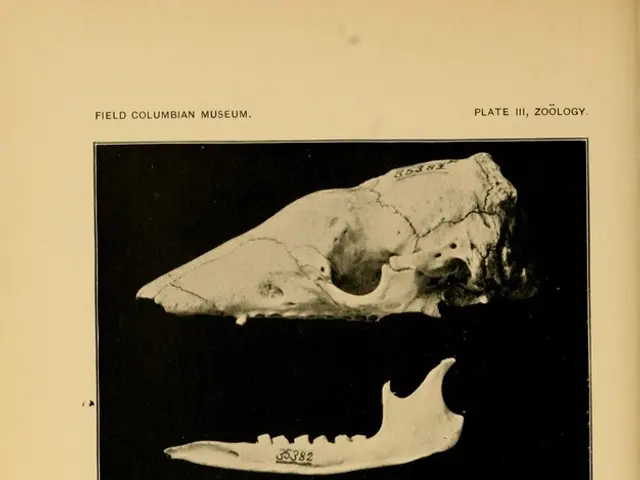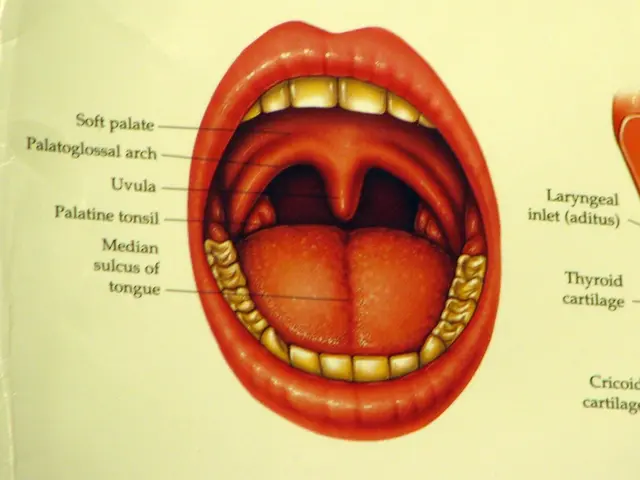Connection Between Breast and Ovarian Cancer: Symptoms and Risk Factors
Breast and ovarian cancer share a considerable genetic and lifestyle connection, resulting in a heightened risk for both diseases. The strongest genetic risk factors involve abnormalities in the BRCA1 and BRCA2 genes, which significantly increase the likelihood of developing both cancers.
Research reveals that people with these specific genetic mutations have a significantly higher risk of developing both breast and ovarian cancers. For example, females with BRCA1 mutations have a 72% lifetime risk of breast cancer and a 44% risk of ovarian cancer by age 80, while BRCA2 mutation carriers show a 69% lifetime risk of breast cancer and a 17% risk of ovarian cancer by the same age.
In addition to these genetic factors, other gene mutations such as ATM, TP53, PTEN, and STK11 can also influence cancer risk, albeit to a lesser extent compared to BRCA1/2 mutations. Moreover, a family history of either breast or ovarian cancer serves as a key risk factor, particularly in families bearing genetic syndromes.
Other shared risk factors encompass lifestyle and environmental factors, including obesity, hormone replacement therapy (HRT), and hormonal exposure. Excess weight contributes to inflammation and hormonal imbalances that potentially encourage cancer development. The use of HRT, especially estrogen alone or when combined with progestin, increases the risk for both cancers. Factors that increase a woman's lifetime exposure to estrogen, such as early menarche, late menopause, and never giving birth, also contribute to a higher risk, though they are more commonly associated with breast cancer.
While not as directly established, a sedentary lifestyle and poor diet may contribute to the risk by promoting obesity and hormonal imbalances.
Genetic counseling and screening are essential for individuals with a family history or other risk factors for either cancer. Braving the complexities of inherited genetic mutations and shared risk factors is crucial to mitigate the risks associated with both breast and ovarian cancers.
People who have previously encountered breast or ovarian cancer are encouraged to work closely with their healthcare providers to monitor symptoms of another cancer. Early detection and subsequent treatment are paramount for improving outcomes. Those at high risk for ovarian cancer include BRCA1 or BRCA2 gene mutation carriers, individuals with a family history of ovarian, breast, or colorectal cancer, those with Lynch syndrome, endometriosis patients, childless women, or women who gave birth late in life, and women over the age of 40.
When ovarian cancer follows breast cancer, it is often diagnosed at a later stage, which can negatively impact survival rates. A 2020 observational study suggests that people diagnosed with both primary breast cancer and primary ovarian cancer have relatively favorable overall survival rates of around 90% after 5 and 10 years. The survival outlook generally improves with a longer interval between the cancer diagnoses.
In addition to genetic testing and regular screenings for those at higher risk, individuals can seek avenues to lower their risk through lifestyle modifications such as achieving and maintaining a healthy weight, regular exercise, limiting alcohol intake, and discussing oral contraceptive options with a healthcare provider to evaluate the benefits and risks based on personal circumstances.
Sources:1. National Cancer Institute. (2021). Ovarian Cancer Risk Factors. Retrieved from https://www.cancer.gov/types/ovarian/hp/ovarian-risk-factors-pdq2. National Cancer Institute. (2018). Breast Cancer Risk Factors. Retrieved from https://www.cancer.gov/types/breast/hp/breast-risk-factors-pdq3. National Cancer Institute. (2020). Hereditary Breast and Ovarian Cancer Syndrome. Retrieved from https://www.cancer.gov/about-cancer/causes-prevention/hereditary/genetic-testing-hs-fact-sheet4. American Cancer Society. (2021). Inherited Gene Mutations and Breast Cancer. Retrieved from https://www.cancer.org/cancer/breast-cancer/causes-risks-prevention/genetics-and-families/genetics-of-breast-cancer.html5. Breastcancer.org. (2020). Understanding BRCA: The Basics. Retrieved from https://www.breastcancer.org/research-and-programs/research-advancements-and-innovation/brca/brca12-basics
- Individuals with mutations in the BRCA1 and BRCA2 genes have a significantly higher risk of developing both breast and ovarian cancers, with 72% lifetime risk for breast cancer and 44% for ovarian cancer by age 80, for BRCA1 mutations, and 69% lifetime risk for breast cancer and 17% for ovarian cancer by the same age for BRCA2 mutation carriers.
- Apart from BRCA1/2 mutations, other gene mutations such as ATM, TP53, PTEN, and STK11 can also impact cancer risk, though to a lesser extent.
- In addition to genetic factors, shared risk factors between breast and ovarian cancers include hormone replacement therapy (HRT), obesity, hormonal exposure, and lifestyle factors such as sedentary lifestyle and poor diet.
- Sources indicate that people diagnosed with both primary breast cancer and primary ovarian cancer have relatively favorable overall survival rates of around 90% after 5 and 10 years, where the survival outlook generally improves with a longer interval between the cancer diagnoses.
- Apart from genetic testing and regular screenings for those at higher risk, individuals can adopt lifestyle modifications such as maintaining a healthy weight, exercising regularly, limiting alcohol intake, and discussing oral contraceptive options with a healthcare provider to evaluate personal benefits and risks.








